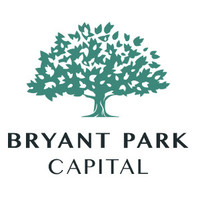John Freund's Posts
3694 ArticlesManolete’s Claim Against Law Firm Survives Request for Summary Judgement
Victims of Post Office Horizon Scandal to Receive Full Compensation
Using Litigation Finance to Generate Value as a CFO

GAO Releases Study of Litigation Finance Market
Court Ruling Reinforces Principle of Confidentiality Between Plaintiffs and Funders

Multiple GLS Capital Executives Selected for IAM Strategy 300 Global Leaders 2023
Validity Finance CEO Offers Industry Outlook for 2023
AxiaFunder Receives Direct Authorization from FCA
Top London Lawyer Forecasts a Busy Year for International Disputes
Softwhale Litigation Investment Fund to Focus on Anti-Competitive Digital Asset Marketplace Law
UK Lawyers Anticipate Lawsuits Over Pension Fund Crisis
An Argument for Greater Transparency in Third-Party Litigation Funding
Hedonova Reports Strong Growth in 2022, Bolstered by Litigation Finance Investments

Bryant Park Capital Secures Senior Debt Facility For DLF Management Corp.
Funders See Opportunity in Class Action Suits Targeting UK Banks
Confidentiality and Litigation Funding Agreements in the U.S.
France Financial Regulator Fines London’s H2O €93 Million for Fund Misrepresentations
LegalPay Launches New Bond Targeted at Retail Investors
Irish Legislature Publishes Draft Amendments Legalizing Third-Party Funding for International Arbitration
Law Firm Continues to Fight $1.8 Million Award to Woodsford

Legal-Bay Pre-Settlement Funding Announces Uptick in Wrongful Termination Cases Due to Sexual Harassment and Discrimination Awareness
Litigation Funders Driving Anti-Competitive Class Actions in UK

LITFINCON II: The Premier Litigation Finance Conference Announces Judicial Panel
Described by Above the Law as the “showcase for some of the most nuanced, content-packed discussion on litigation finance,” LITFINCON II returns to the Post Oak Hotel in Houston on March 1-2, 2023.
LITFINCON II is thrilled to announce that four distinguished jurists will participate in its featured Judicial Panel:
- The Honorable Alan Albright of the United States District Court for the Western District of Texas
- The Honorable Nancy Atlas retired United States District Court for the Southern District Court of Texas
- The Honorable Mike Engelhart of the 151st Civil District Court in Harris County
- The Honorable Charles Eskridge of the United States District Court for the Southern District Court of Texas.
“As a litigation funder, we are honored to provide the platform and resources to help trial lawyers and litigants achieve justice. Our ultimate mission is to continue the advancement of an emerging asset class by educating and promoting the best practices in litigation finance at LITFINCON II,” says Mani Walia, Managing Partner & General Counsel at Siltstone Capital.
In addition to the judicial panel, we are excited to announce that there will be a new academic panel featuring the nation’s leading scholars at LITFINCON II this year. We look forward to a wide-ranging discussion about the impact of litigation finance in the U.S. and abroad.
LITFINCON II is grateful for the early support from several high-profile organizations in the litigation finance industry. Confirmed initial sponsors for LITFINCON II include Certum Group, CAC Specialty, Schulte Roth & Zabel, Kerberos Capital Management, Gerchen Capital Partners, Curiam, D.E. Shaw & Co., Arran Capital, Aon, Filevine, Dunning Rievman & MacDonald, Omni Bridgeway, 4 Rivers Legal, Soryn IP Capital Management, Willis Towers Watson, and Calumet Capital.
Siltstone Capital, the host of LITFINCON II, is a premier investment firm that provides capital solutions to litigants, law firms, and legal departments to help resolve their real-world legal issues and create significant value for all stakeholders. For more information about Siltstone Capital, please visit our website http://www.siltstonecapital.com.
For more information about LITFINCON, please visit our website http://www.litfincon.com.


